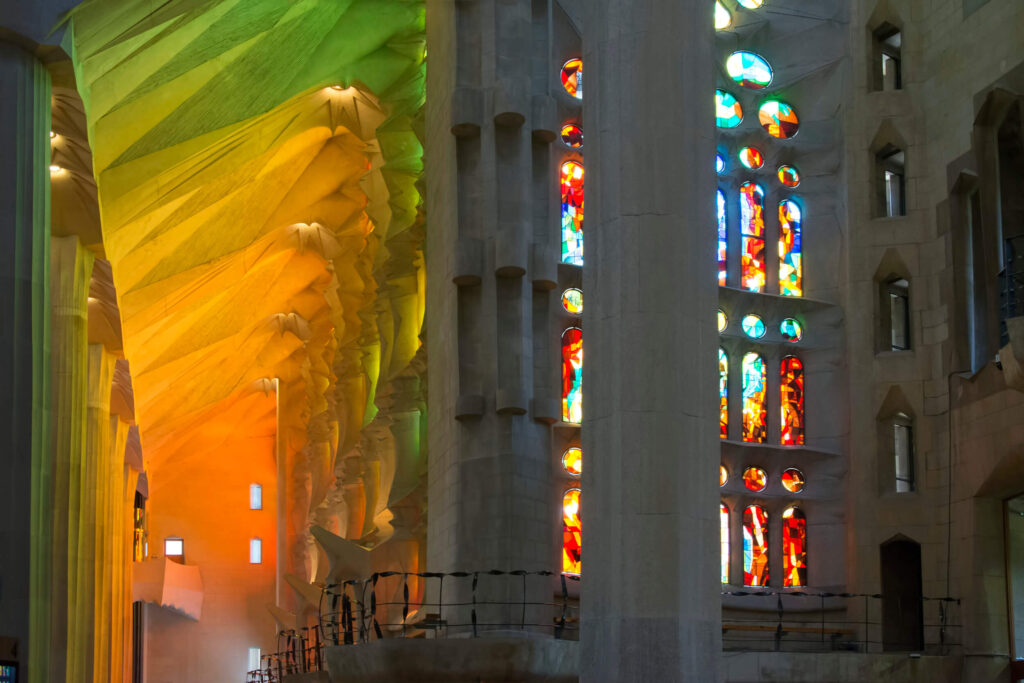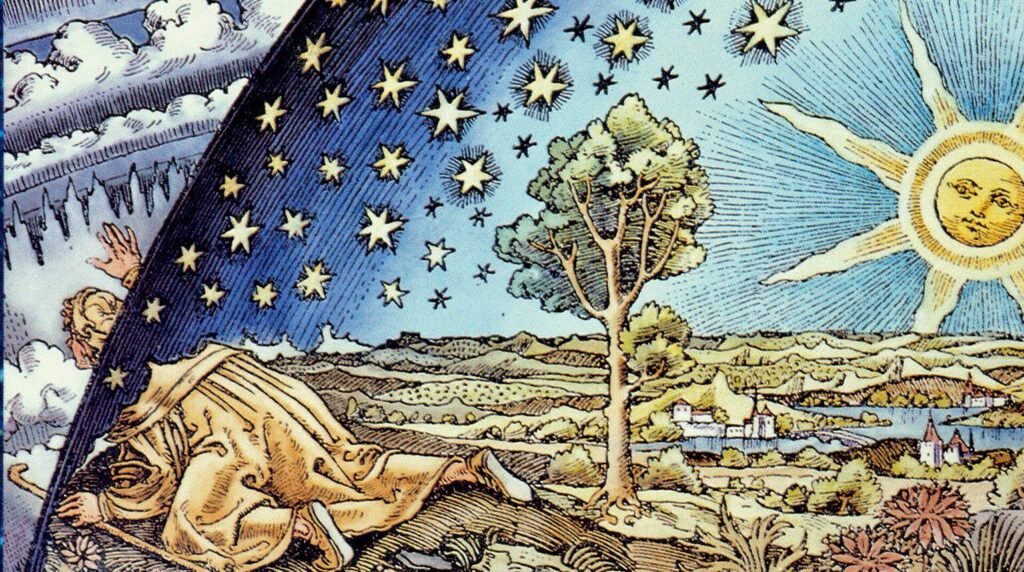
Ten Theses on Artificial Intelligence
This is an Altum essay.
I. Technologies such as ChatGPT and Midjourney, like many of their machine predecessors, arrive in our midst with a considerable amount of cultural momentum behind them — momentum that seems to brush aside questions and consternations. These technologies seem to look at us dispassionately, pointing out that we can resist their allure, but not for long. “After all,” they seem to say, “hasn’t the industrial revolution changed life for the better? Those Luddites threw a bit of a fit and destroyed a few good machines back at the beginning of the industrial revolution, but who really takes them seriously? Aren’t you all wealthier, healthier, longer-lived, and more comfortable than your ancestors? The smartphone, the internet, social media, video streaming, and so forth have made life more interesting, agreeable, and easier, haven’t they?” One is invited, it seems, to accept these technologies as inevitable developments, as the unfolding of the unstoppable machinery of historical progress. This is clearly a part of their power: the ability to present themselves as solutions to merely technical and logistical problems, as paving the way to greater comfort and convenience; rather than as raising a host of questions touching on the fundamentals of what it means to be human.
II. Resistance to technologies that provide greater convenience and ease requires an interior strength of will, one that very few of us possess. Sometimes we do muster this resistance, but it comes out as irrational fear. In the case of AI, one can sense this fear in some of AI’s critics: fear that humans will be replaced, or rendered irrelevant, or that human creativity will be outsourced to machines. Others capitulate to an even more exotic fear: that machines capable of intellection will be inhabited by demons or other malevolent spirits. But fear, the inverse of the tech-lover’s elation, inhibits clear thinking.
III. Let’s try, therefore, to attain clarity in our thinking. Neither ChatGPT nor Midjourney nor any of the other AI programs in existence produce or create art or writing; rather, humans produce images and writing by means of these machines. The machines were made by humans. Human intelligence and ingenuity went into their creation. All of these AI programs were also ‘trained’ on miles of text and millions of images — all created by humans. Let’s exert an effort, then, not to point at the machine in wonderment as though it is creating an essay or image. Point, rather, beyond (or behind) the machine to the humans who have made this marvel of ingenuity; but even more so, to the artists and creators whose works have (unwittingly and unwillingly) been fed into the machine for ‘training.’ To say that AI ‘created’ this or that is like seeing a ball flying through the air and assuming that it threw itself. Follow the ball’s trajectory and you’ll see its source.
IV. Both the image-generating and the word-generating AI software have the power of recombination. The program can respond to a prompt such as ‘write an essay about pickles in the style of Ernest Hemingway’ or ‘paint a picture of Beyoncé in the style of Titian.’ But is this commensurate with the power of creation? Only if we consider creation in mechanistic terms — as though Giotto’s beautiful frescos were the mere addition of medieval iconography to the nascent perspectivism of the Renaissance. Our culture is full of mechanistic assumptions: that the firing of synapses in the brain produces consciousness, that genes produce species, and so forth. To think that the mere combination of millions of images fed into the AI digestive system will produce creativity is to fall into the same mechanistic error. Art is not the mere sum of influences and subjects. Real creativity is not mere recombination but the guiding hand of the human spirit, reordering the influences and subjects at its disposal to an end beyond themselves.
V. The power of images, even those created by humans, is that they address our visual, emotive mind rather than our verbal (and rational) mind. Yet a painting still carries within it a human intention: intention to create beauty, to depict a story, etc. A Midjourney image also carries an intention, but not a clear or strong one — only the barest of flippant, passing whims. “A rabbit in a spaceship eating steak tartare” is not a clear intention carried through from conception to completion in a genuine creative act, but a dream-like whim or irrational impulse passing through the distracted mind. An artist must work and sweat to bring his or her creative thought to completion, holding fast to it with a strong will while wrestling with the intractable nature of physical materials: pigment, brushes, canvas, marble, and chisel. Midjourney promises the result without the sweat; but, lacking a strong will and intention held over time against the difficulties of the creative process, it’s a mere pastiche of creativity.
VI. That these machines could be confused with human consciousness and creativity only shows the poverty of our conceptions of these terms. Only if we accept a priori a mechanistic account of human thinking and creative activity could we confuse ourselves in such a way about these machines.
VII. While I haven’t worked with the Midjourney software, I have spent some time using ChatGPT in an effort to understand it better. “Conversing” with ChatGPT is like trying to hold a conversation with an SAT essay test or a Wikipedia page. It spits out facts and tells us all the different opinions about this or that, but refuses to take a stand on anything. On the one hand, this is admirable honesty — the programmers have made some effort to assure that the program will not claim a human-sort of consciousness to its users. On the other hand, it creates the false impression that the program is objective or neutral. In fact, from what I can tell, the program reproduces the remarkably boring and tired ‘normal’ view of the world: a standard-model worldview in which history is progressing toward greater and greater enlightenment through the beneficent effects of science and technology.
VIII. Max Leyf, at Theoria Press, has written a very fine essay about the new software, “On GPT3.” He warns us that the real danger of AI is not that it will pass the Turing test, but that humans will increasingly come to define intelligence in the terms offered by AI. Thus AI offers a tonic, a bitter medicine that we can choose either to take or avoid: to rediscover our true creativity and humanity. He writes,
If anyone happens to want my prescription, therefore, it is something like this: every advance in the non-human must be met with a correlative development and elevation of our humanity. Humanity, Man, or humankind are abstract nouns and hence do not “develop” except in respect to the concrete humans that comprise them. Hence, the task befalls me to develop my soul to the point that I am no longer inclined to entertain the superstition that computers can think, to the point that I am capable of passing the Turing test and its reverse in respect to robots, to myself, and to other humans, to the point that I no longer find appeal in the temptation of expediency but rather assume the mantle of my station in the cosmos—as a collaborator in the economy of Creation—and don’t shy away from this work as though I had something better to do.
IX. Max Leyf echoes my own personal favourite essay on this topic, “The Deceiving Virtues of Technology” by Stephen Talbott (freely available here). Talbott looks at technology through the story of Odysseus, the ‘man of twists and turns.’ Talbott writes that technology is a kind of portrait that forces us to confront what is most machine-like in ourselves: our drive to domination, our love of convenience, our heartless, calculating pragmatism. In this, it doesn’t have a merely negative function but a positive one, albeit paradoxically:
All this can be summarized by saying, ‘technology is our hope if we can accept it as our enemy, but as our friend, it will destroy us.’ Of course technology threatens us, and of course it calls for a certain resistance on our part, since it expresses our dominant tendencies, our prevailing lameness or one-sidedness. The only way we can become entire, whole, and healthy is to struggle against whatever reinforces our existing imbalance. Our primary task is to discover the potentials within ourselves that are not merely mechanical, not merely automatic, not reducible to computation. And the machine is a gift to us precisely because the peril in its siding with our one-sidedness forces us to strengthen the opposite side — at least it does if we recognize the peril and accept its challenge.
X. Some commentators have questioned the name of the image-generating software Midjourney. What does it mean? Inquiries have been made to the company itself, but to no avail. The name immediately calls to my mind the opening of Dante’s Divine Comedy:
Nel mezzo del cammin di nostra vita,
Mi ritrovai per una selva oscura,
Chè la diritta via era smarrita.
In the middle of this journey of our life,
I found myself wandering through a dark wood,
And realized that the right way had been lost.
Getting lost is a painful and humbling experience, as I wrote about recently here. Yet it is a tonic to the soul, forcing one to reckon with one’s errors in the past and their effect on one’s precarious predicament in the present. By giving their software a name that calls Dante’s lost pilgrim to mind, Midjourney’s creators have given us an unintentional warning, one we would do well to heed: we humans are getting farther and farther from the right path, as we become increasingly entangled in a dark wood of our own devising.
Author John Carr, after attending the Graduate Institute at St John’s College, taught humanities, Greek, and Latin for several years in classical schools. He recently left a homestead in the Green Mountains of Vermont to travel full-time with his family while homeschooling.
Note: Guest bloggers share their own thoughts as classical educators and learners and do not represent ClassicalU.com or Classical Academic Press. If you are interested in writing guest blog content, please contact us with your name, connection to classical education, and ideas for a blog post.








Responses